23 Reasons to Dive British Columbia
B.C.’s challenging, rewarding scuba diving is world-class yet close to home.
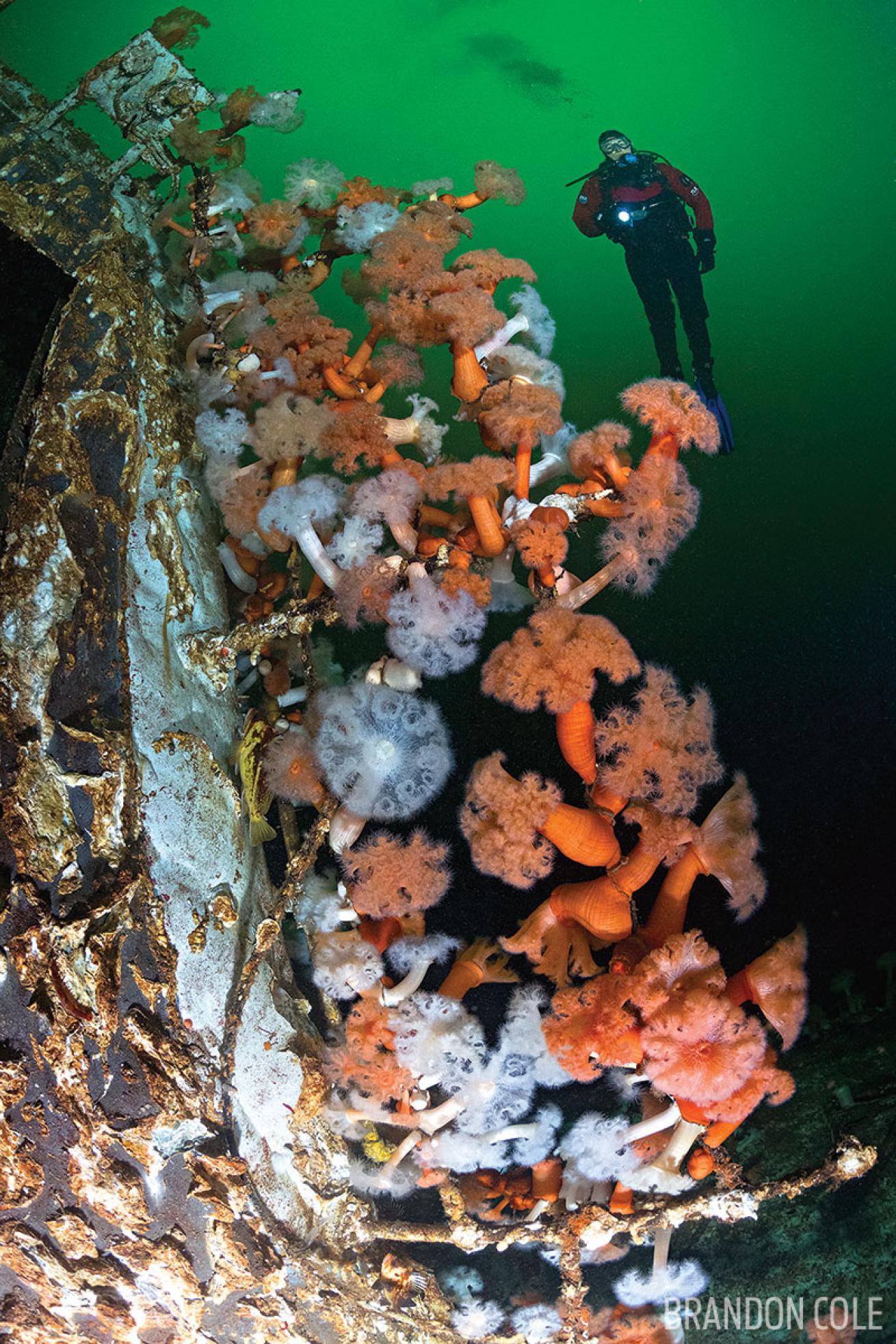
Brandon ColeBritish Columbia boasts walls more colorful than many of its tropical counterparts.
Props to those who have already taken the plunge into the chilly emerald-green waters off Canada’s westernmost province. It will come as no surprise to them that British Columbia has once again been commended most admirably by our readers. For those who have not yet said hello to friendly Steller sea lions and wolf eels, explored B.C.’s fl eet of purpose-sunk shipwrecks, and drift ed along current-swept, critter-stacked walls more colorful than many tropical counterparts, read on to learn what your peeps are raving about. Then pick a location and operator, don a drysuit, and get to it.
British Columbia took home the following seven accolades in the 2018 Scuba Diving magazine Readers Choice Awards:
| FIRST PLACE |
|---|
| Walls |
| THIRD PLACE |
|---|
| Best Overall |
| Macro |
| Wrecks |
| Photography |
| FIFTH PLACE |
|---|
| Conservation |
| Advanced |
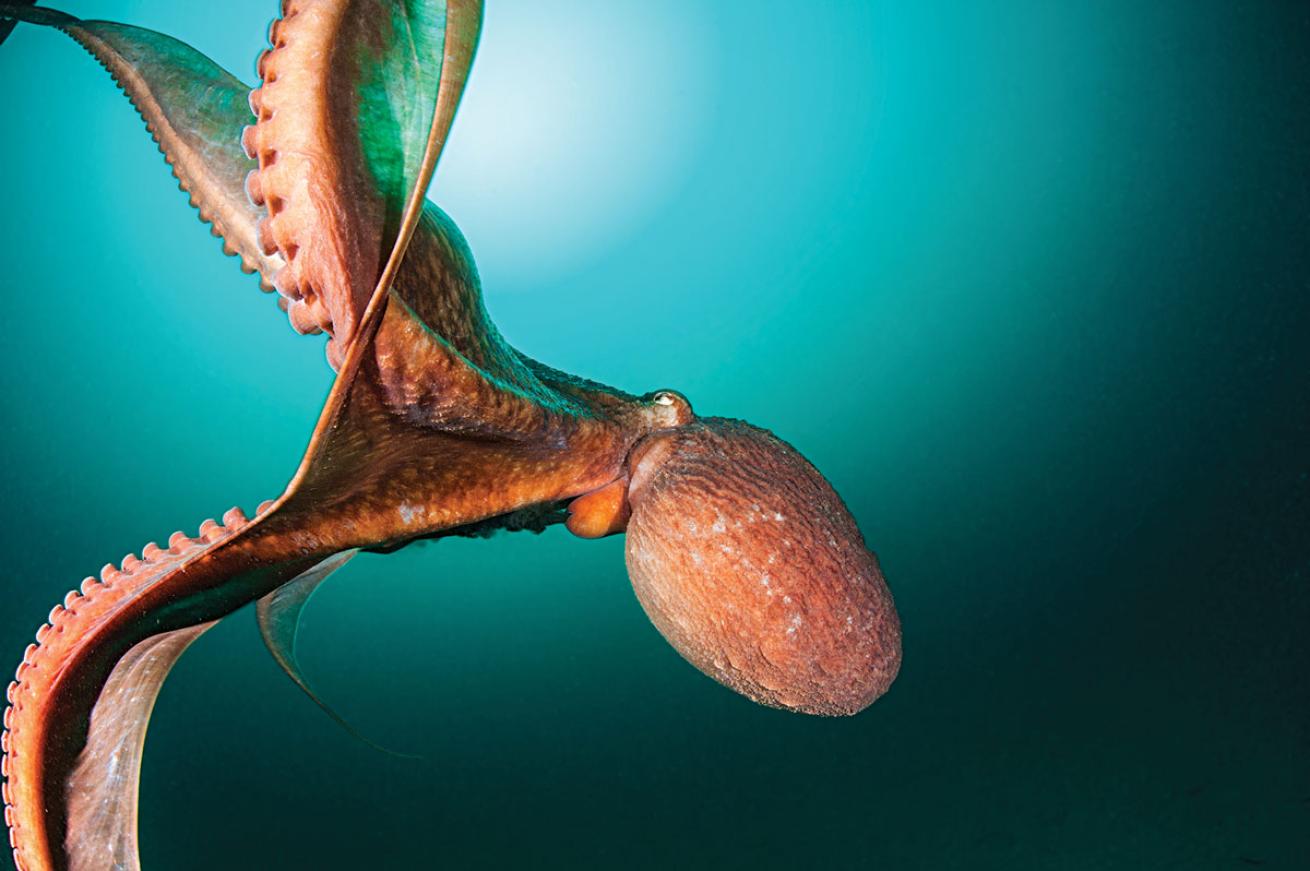
ShutterstockHead to British Columbia for a chance to encounter a giant Pacific Octopus on a dive.
PHOTOGRAPHY
1 ) MIND YOUR STROBES
When shooting scenes of B.C.’s rocky reefs, kelp forests, wrecks and big animals such as the giant Pacific octopus, balancing available light and minimizing backscatter is challenging. Using strobe diff users and low-power settings can help with the former, careful strobe placement with the latter.
2 ) REFERENCE MATERIALS
151 Dives in the Protected Waters of Washington State and British Columbia by Betty Pratt- Johnson is the local-dive-site bible with maps, site descriptions, current info and more. Marine Life of the Pacific Northwest by Andy Lamb is indispensable for critter identification, with more than 1,400 species covered.
3 ) STAYING TOASTY
It’s difficult to focus if you’re shivering uncontrollably and can’t feel your fingers. A drysuit (and for some, dry gloves) will keep you warm and should be considered mandatory for diving B.C. waters, where temps range from 42 to 55 degrees Fahrenheit.
4 ) SIT BACK AND WATCH
Spectacular wildlife viewing above the waves adds another dimension to a diving holiday. Join Big Animal Encounters on an expedition to see killer whales, grizzly bears, pinnipeds, bald eagles and more. A telephoto lens of 200-400mm focal length with image stabilization is the ideal optic for impactful photos.
5 ) SOMETHING’S FISHY
B.C.’s photo opps are not limited to salt water. Each October, tens to hundreds of thousands of sockeye salmon spawn in the Adams River in central B.C. Copper Island Diving offers trips in nearby Shuswap Lake, where you can dive with salmon before they move up into the river. Getting into the Adams River itself requires special permission from B.C. Parks.
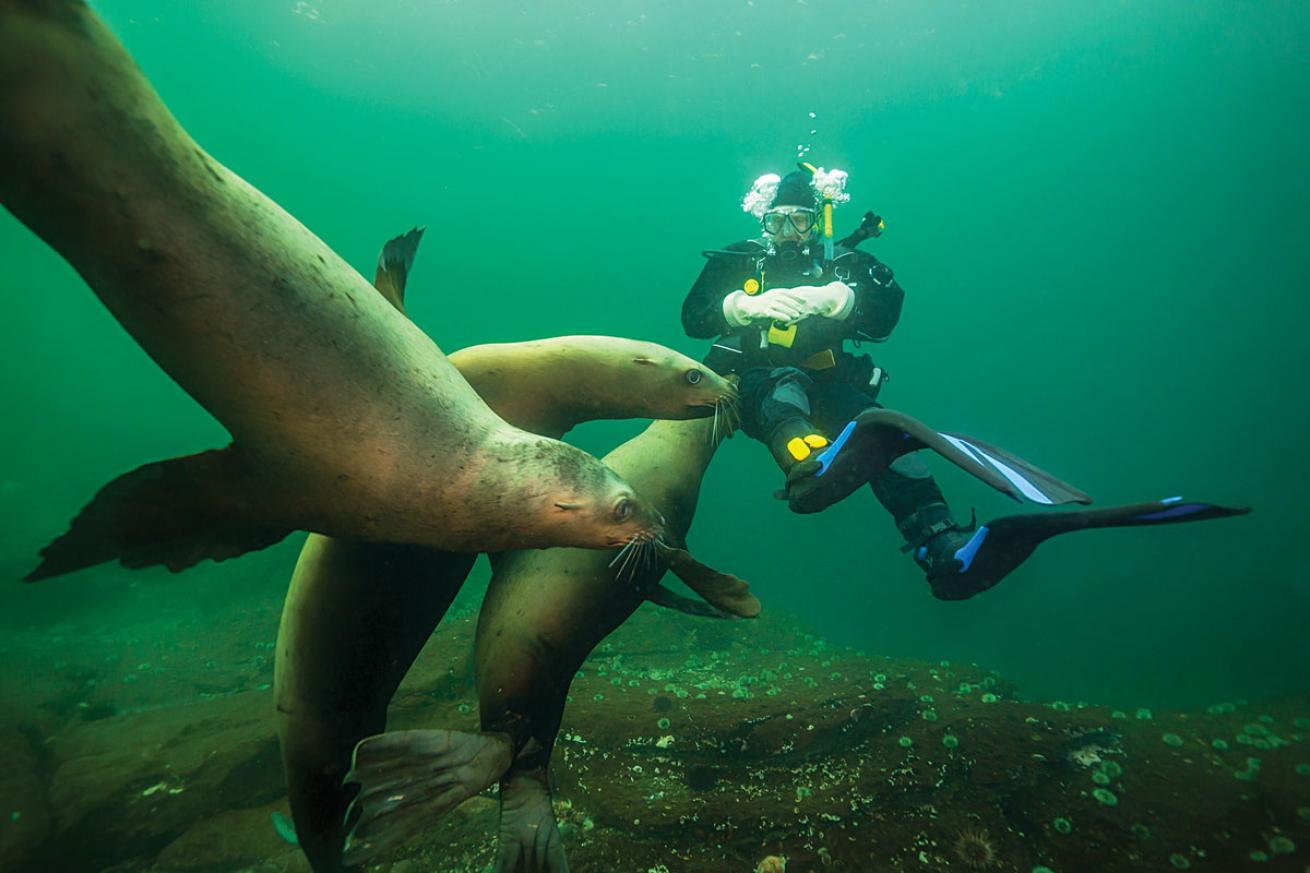
ShutterstockDespite the cold weather, there are places to dive year-round in B.C.
WALLS
6 ) OFF THE WALLS
From the waterline to way, way down, B.C.’s walls are the stuff of legend. Sites with phenomenal vertical include Powerlines in Agamemnon Channel, Browning Wall in Queen Charlotte Strait, Steep Island in Discovery Passage, and Whytecliff near Vancouver.
7 ) DEEP DWELLERS
Cloud sponges (Aphrocallistes vastus) grow in eerily beautiful, huge formations below 80 feet on some walls, especially in protected fjords along the coast of mainland B.C. Another unique denizen found from 150 feet down into the abyss is the red candelabra gorgonian (Paragorgia arborea), which lights up the night like a firebrand.
8 ) TEC-SAVVY
Technical diving is big in B.C. and helps open doors to extreme exploration of deep walls. Some operators, such as Pacific Pro Dive on Vancouver Island, are tec friendly and well-equipped to facilitate advanced diving. Trimix, sidemount, rebreather and other certifications are available.
9 ) ALL CLEAR
A bonus to wall diving is access to cleaner water. Plankton blooms are common in B.C., especially near the surface. Along walls, you’re able to get below that murky layer and enjoy improved viz, sometimes 40 to 100 feet. Just remember to stay within your limits. Some walls plummet deeper than your training.
10 ) GET YOUR THRILLS
For a wall-dive-like adrenaline rush above water, try the Bungy Jump at WildPlay Element Park in Nanaimo on Vancouver Island. They also offer an aerial obstacle course, zip- lining, and a 150-foot giant “primal” swing, a great warm-up to the full-on bungee drop.
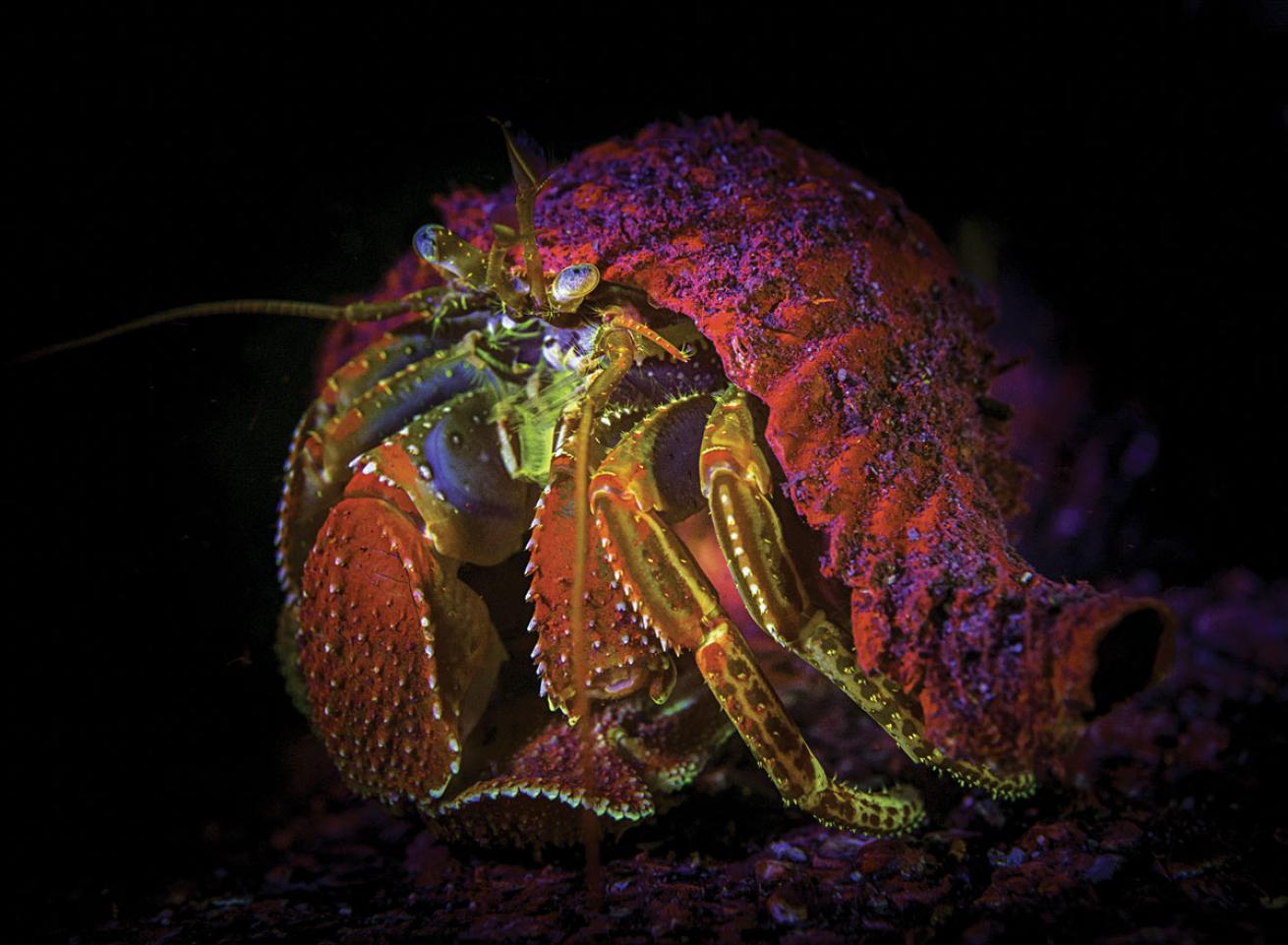
ShutterstockAmazing macro life is everywhere in B.C.
MACRO
11 ) I SPY
Here, amazing macro life is everywhere, so prepare to be overwhelmed with new species for your logbook and too many targets for your camera. One of many favorites is the candy stripe shrimp, a fantastically painted 1-inch beauty that lives on crimson sea anemones.
12 ) TINY BEAUTIFUL THINGS
While many people fixate on B.C.’s megafauna, the plethora of microbeasties (gaudy nudibranchs, weird fish, camouflaged crabs) steal the show at spots like Dodd Narrows in the Gulf Islands, Victoria’s Ogden Point Breakwater, and Kyen Point in Barkley Sound.
13 ) NIGHT MOVES
Everyone knows that the freaks come out at night. Diving after the sun goes down is a smart move to meet shady characters such as stubby squids, poachers, ratfish and octopuses. Afterward, celebrate and mingle at local watering holes, including Little Jumbo in Victoria and Alibi Room in Vancouver.
14 ) SEEING THE LIGHT
A quality spotting/focus light like Light and Motion’s SOLA Photo Dive Lights is essential for macro photography in often- dim B.C. waters to aid in finding small, sometimes cryptic marine life and helping your camera to autofocus. The red-light feature can prove useful for light- sensitive animals such as crustaceans and cephalopods.
15 ) ZOOMING IN
Taking macro pictures requires — you guessed it! — a macro lens. For full-frame DSLR cameras, a 50 or 60mm optic is most useful. If budget allows, a longer 100 or 105mm lens can come in handy for tiny critters or detail/ texture/pattern close-ups. A wetdiopter, which can be attached underwater, is a clever way to increase magnification if desired.
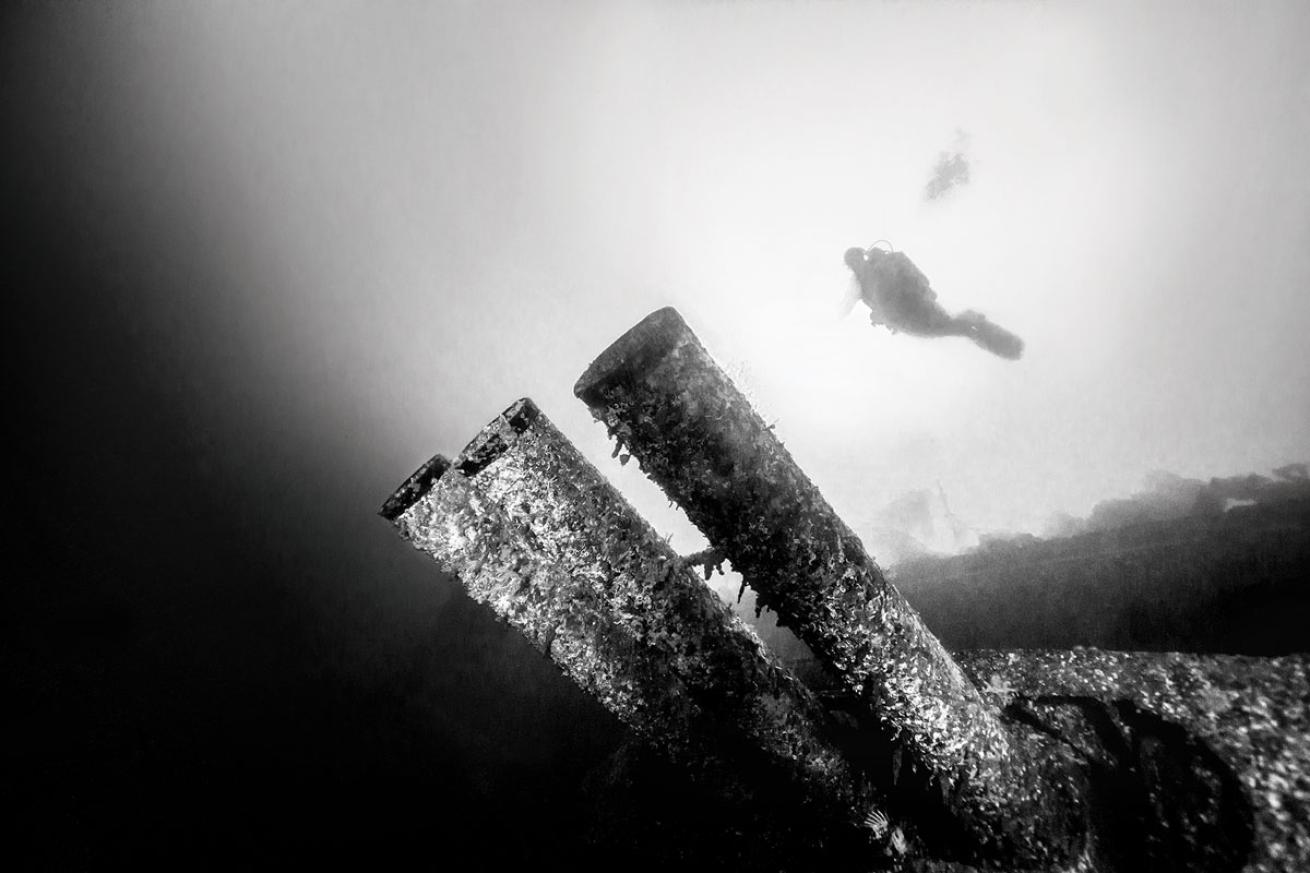
ShutterstockThe Artificial Reef Society of British Columbia turned B.C. into an internationally renowned wreck diving destination.
WRECKS
16 ) TREASURES OF THE DEEP
The Artificial Reef Society of British Columbia turned B.C. into an internationally renowned wreck diving destination. Since 1991, they have created eight thriving artificial reefs by prepping and sinking seven ships and one airplane, luring millions of divers to an epic wreck trek stretching from Victoria to Campbell River.
17 ) VETERANS AFFAIRS
A shipwreck twofer awaits near Nanaimo on Vancouver Island. The 366-foot-long Saskatchewan and 440-foot Cape Breton rest upright at 130 and 140 feet, respectively. The retired warships are covered in plumose anemones and feather stars, and host populations of rockfish, lingcod and cabezon. Highlights include deck guns, radar towers, bridges and railings. There are numerous options for safe penetration.
18 ) ADVANCE YOUR TRAINING
Those serious about wreck diving might consider taking a wreck-diver specialty course to better learn how to safely enjoy shipwreck exploration. Sea Dragon Charters in West Vancouver offers this certification (which includes training on penetration using lines and reels) and can take you out to dive the Annapolis wreck.
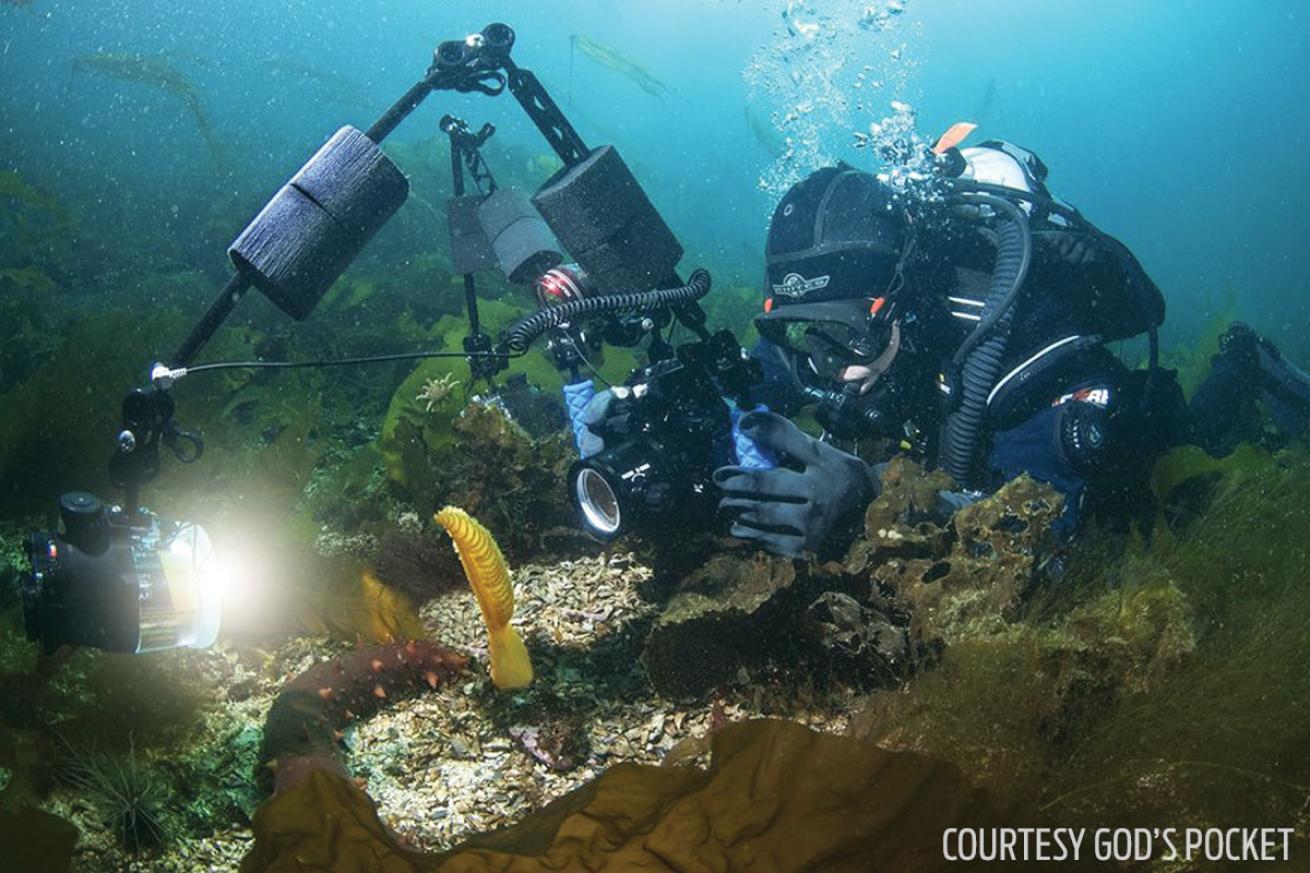
Courtesy God's PocketRemote dive lodges on the Sunshine Coast are known to spoil divers with cozy accommodations and delicious food.
BEST OVERALL
19 ) DIVERSITY TO IMPRESS
BC’s scuba scene is multifaceted in how, what, where, with whom and why you dive. Day-boat charters serve many regions. For the DIY crowd, there are great shore dives. Scuba resorts offer all-inclusive packages. There’s something for everyone in the dive tribe.
20 ) SEASONS OF DIVE
Many of British Columbia’s diving hot spots are sheltered from open ocean exposure. There are always places to dive, year-round. Watch the kelp forest begin to grow in spring. In summer, glorious weather is perfect for drive-and-dive road trips on Vancouver Island. Fall has its own colorful charm and excellent diving conditions. Winter months often deliver the best visibility and exhilarating encounters with Steller sea lions off Hornby Island (hornby islanddiving.com).
21 ) WAIT, THERE’S MORE!
Wait, There’s More! Reserve time for non-diving topside activities, whether skiing Whistler’s slopes north of Vancouver city or hiking the West Coast Trail along Vancouver Island’s rugged southwestern flank. There’s also kayaking, mountain biking and rainforest walks, as well as visits to Stanley Park, Butchart Gardens, and the Royal British Columbia Museum.
22 ) CUTTING SOME SLACK
Current is critical to a healthy marine environment, a conveyer belt carrying food for creatures large and small. Many of B.C.’s best dive sites — including Race Rocks near Victoria, Nakwakto Rapids northeast of Port Hardy and Skookumchuck Narrows in Sechelt Inlet — can be safely dived only during “slack,” between changes in current direction when water movement is at a minimum.
23 ) MANY HAPPY RETURNS
Come for the diving, come back for the hospitality … and more diving. Remote dive lodges like Rendezvous in Barkley Sound and Porpoise Bay Charters on the Sunshine Coast will spoil you with cozy accommodations, sumptuous food and, of course, killer diving.












